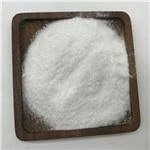The Role of Trental 400 (Pentoxifylline) in Managing Peripheral Vascular Disorders
Trental 400, known generically as pentoxifylline, is a medication primarily used to improve blood flow in patients suffering from peripheral vascular diseases, especially those resulting from conditions like atherosclerosis and diabetic neuropathy. The unique pharmacological properties of pentoxifylline make it a valuable therapeutic option for enhancing microcirculation and alleviating symptoms associated with poor blood circulation.
Mechanism of Action
Pentoxifylline belongs to a class of drugs called xanthine derivatives. It exerts its effect by decreasing blood viscosity and improving red blood cell flexibility, which facilitates better blood flow through narrowed or obstructed vessels. By enhancing oxygen delivery to tissues and reducing clot formation, Trental 400 not only alleviates symptoms but also addresses the underlying circulatory issues. This mechanism is especially beneficial for patients with intermittent claudication, a condition characterized by muscle pain during physical activity due to insufficient blood flow.
Clinical Applications
Trental 400 has demonstrated efficacy in various clinical scenarios. It is primarily prescribed for conditions like intermittent claudication, where patients experience pain and cramping in their legs during exercise. By improving blood flow, pentoxifylline can significantly enhance exercise tolerance and reduce the pain associated with this condition. Studies show that patients utilizing Trental 400 often report improved quality of life due to increased mobility and reduced discomfort.
Moreover, pentoxifylline is also used in treating diabetic ulcers and wounds in patients with diabetes. Patients with diabetes are at a higher risk for foot and limb complications due to poor circulation. The improved microcirculation offered by Trental 400 can facilitate better healing of ulcers, preventing the need for more invasive treatments like amputation.
tab trental 400

Side Effects and Considerations
Like any medication, Trental 400 is not without its side effects. Common adverse reactions may include gastrointestinal disturbances such as nausea, vomiting, and diarrhea, as well as dizziness and headaches. While most patients tolerate the medication well, it is essential for healthcare providers to monitor for potential interactions with other drugs, particularly anticoagulants and antiplatelet agents due to increased risk of bleeding.
Before initiating treatment with pentoxifylline, a thorough patient evaluation is critical. Individuals with a history of bleeding disorders or who are pregnant or breastfeeding should exercise caution and engage in detailed discussions with their healthcare providers.
Dosage and Administration
Trental 400 is typically administered orally with meals to enhance absorption and minimize gastrointestinal side effects. The standard dosage is 400 mg three times a day, but it is vital for clinicians to tailor treatment according to individual patient needs, considering factors such as severity of the condition and other underlying health issues. Regular follow-up appointments are essential for assessing the drug's effectiveness and making necessary adjustments.
Conclusion
Trental 400 (pentoxifylline) plays a significant role in managing peripheral vascular disorders, particularly for patients experiencing complications from conditions such as diabetes and atherosclerosis. Its ability to enhance blood flow and improve oxygen delivery to tissues makes it an invaluable tool in treating intermittent claudication and promoting wound healing in diabetic patients. However, careful consideration of potential side effects and patient-specific factors is crucial for optimizing treatment outcomes. As ongoing research continues to explore the full range of benefits of pentoxifylline, its place in the therapeutic landscape of vascular health remains firmly established.

